Situated on Calle Sant Feliu, in the heart of Palma’s historic quarter, the Art Palace and Art Lab of Gerhardt Braun occupy a distinguished 17th-century residence - a testament to an era when the city was a pivotal node in Mediterranean trade. Today, the Gerhardt Braun Gallery ranks among the most esteemed venues for contemporary art on Mallorca, offering a dialogue between progressive artistic positions and the enduring grandeur of historic architecture.
Table of Contents
- On Arriving and Staying
- Palma as a Cultural Stage
- Art as an Engagement with the City
- The Art Palace as a Platform for the Present
- Serendipity or Vision?
- Art in Dialogue with History
- Subtle Interventions, Lasting Impressions
- Artistic Signature and Curatorial Line
- Curatorial Instinct or Creative Freedom?
- Challenge or Source of Inspiration?
- An International Audience with an Eye for Architecture
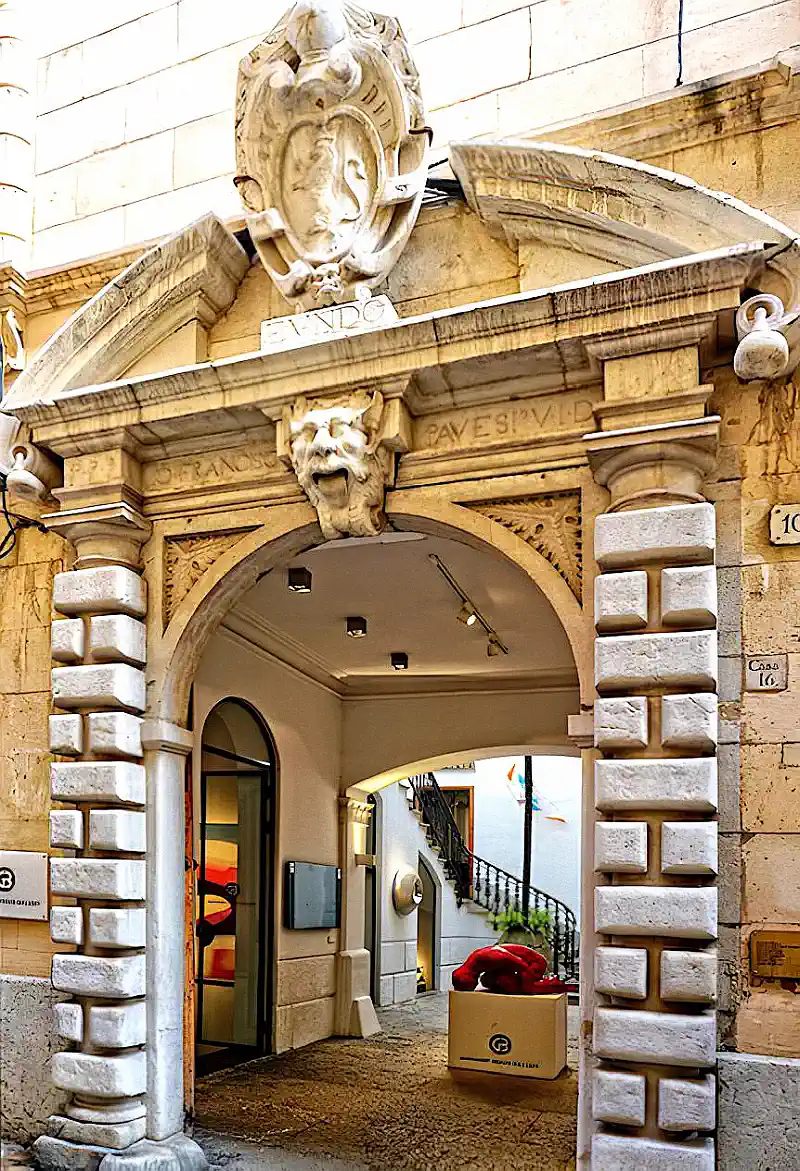
Mr Braun, before we speak about art: What first brought you to Palma, and what prompted you not only to live here but to invest as well? Was there a moment when you realised that this was the right place for you?
Palma captivated me from the very beginning - for me, it’s something close to paradise. I immediately sensed that this city offered exactly what I was looking for: an international spirit and cosmopolitan openness, yet with a scale that allows for a personal, grounded way of life. This balance between urban vitality and historical depth was what ultimately convinced me. From the moment I arrived and let the city speak to me, I knew: this is where I belong.
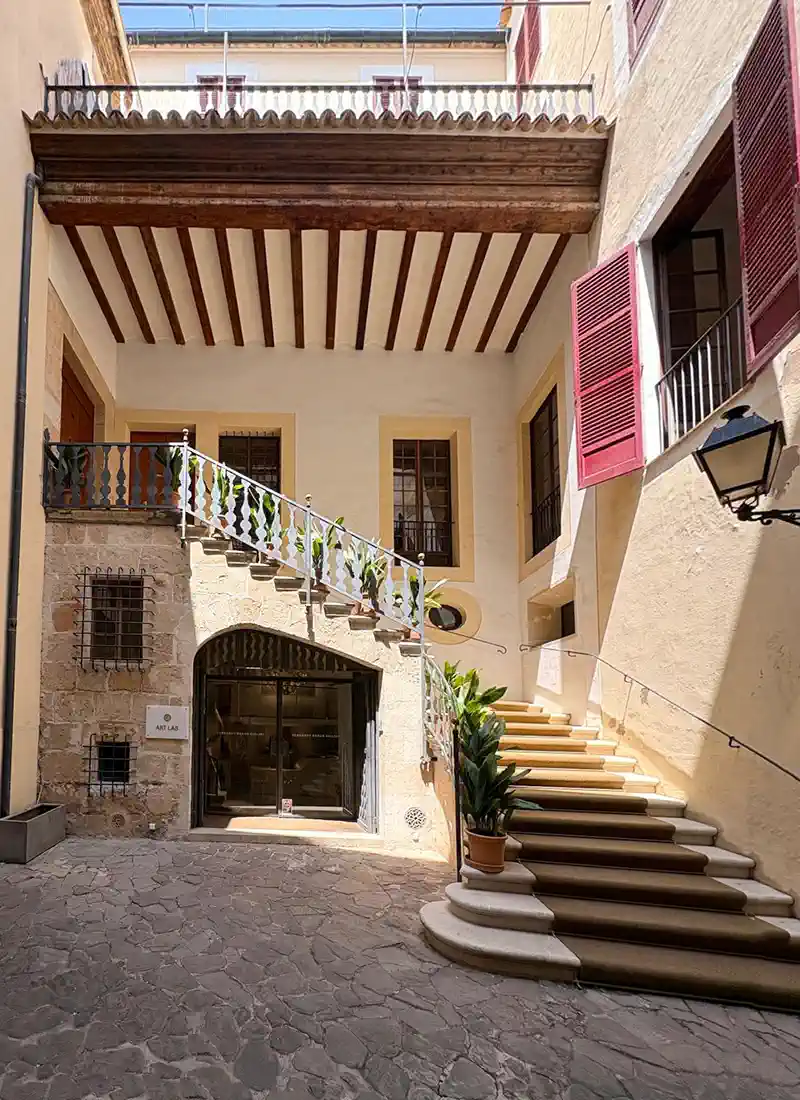
In your view, what sets Palma apart from other European cities in terms of culture, quality of life, and spaces for art?
For me, Palma stands out through a unique blend of culture, quality of life, and Mediterranean flair. The old town, with its narrow alleys and striking architecture, offers a historical backdrop that is unparalleled in Europe. This setting creates an atmosphere shaped by cultural richness and southern ease.
What makes Palma truly distinctive is its scale: large enough to attract an international audience, yet compact enough for art and culture to remain close to the people. Visitors with an interest in art find their way directly into the galleries - drawn by the interplay of contemporary art and historic architecture. This creates an immediate dialogue between artwork, artist, and viewer. It’s this proximity that makes Palma such an inspiring place - for artists, collectors, and all those with a passion for art.
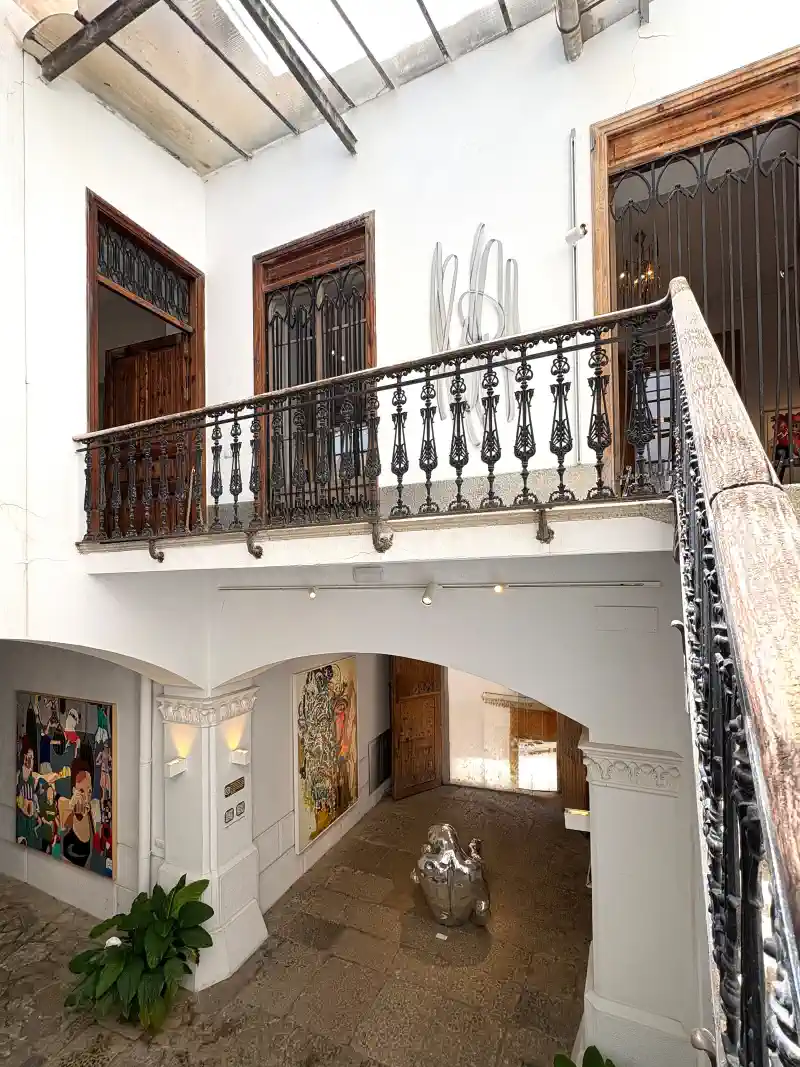
Would you consider your work in these historic buildings a form of cultural engagement with the city?
Absolutely. I regard my work in this building - and with the gallery as a whole - as a contribution to Palma’s cultural landscape, addressing art enthusiasts among Mallorcans, residents and international visitors alike. Our exhibition spaces - nine in total, including two historic palaces and a gallery in Madrid, most of them located along Calle Sant Feliu - provide a stage for thought-provoking art and a meeting ground for dedicated collectors and connoisseurs from around the world.
Our exhibition openings, in particular, offer a valuable opportunity for direct exchange between artists and the public. In this way, we contribute to Palma’s already vibrant art and cultural scene - from the contemporary art museum along the city walls to Casa Soleric on Passeig del Born - ensuring that the city continues to be recognised as a cultural destination where contemporary art holds a meaningful and permanent place.
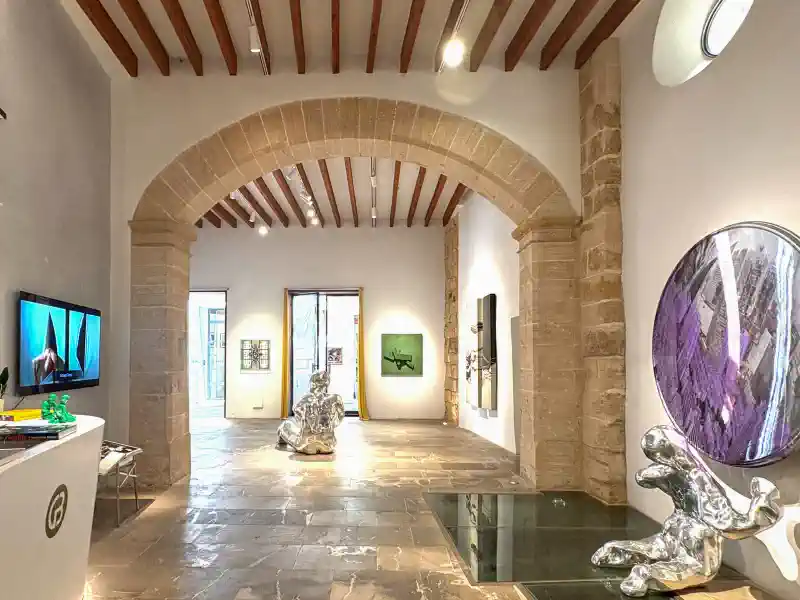
What makes the Art Palace, a historic city palace, the ideal setting for showcasing the art you represent? And what is the story behind this urban palace?
The history behind the city palace traces back to a 17th-century building, constructed by merchants who sought to manifest their status and cultural ambitions through architecture. Today, we continue this legacy by opening these spaces to art, dialogue and exchange. Through rotating exhibitions of contemporary art and a forward-looking program, our goal is not only to honour the cultural significance of the location but to further develop it - as an open venue for new perspectives and societal impulses.
For me, the historic rooms are the perfect setting to display the art we represent, because the space itself becomes part of the experience - unlike the neutral white-cube galleries typical of contemporary art. From the moment you approach, and certainly upon entering, the history is palpable: the narrow alleys of the old town, the heavy wooden doors, the ornate façades of the city palace, the play of light and shadow. Inside, soaring ceilings, stone staircases, historic window frames and balcony extensions merge seamlessly with contemporary art. The space itself becomes part of the narrative - creating a dialogue between artwork and architecture, between past and present. Within this tension, every exhibition stages itself anew: a large-scale installation forms a deliberate counterpoint to the centuries-old fabric, while vivid paintings, set against traditional Mallorcan tiled floors, create their own resonant environment.
War es von Anfang an klar, dass es ein historisches Gebäude sein sollte – oder war das eher eine glückliche Fügung mit viel Potenzial?
Ursprünglich habe ich mit einem Concept Store begonnen, der Designmöbel, Kunst und Fashion unter einem Dach vereinte. Das historische Gebäude erwies sich dabei als ideale Ergänzung und verlieh dem Konzept eine neue räumliche und inhaltliche Tiefe. Die Verbindung von zeitgenössischem Design und Kunst mit der Atmosphäre eines Stadtpalais hat sich als ideal erwiesen – und daraus hat sich letztlich das heutige Galerie-Konzept entwickelt.
How does a place like this – with its history and character – influence the impact of the art you exhibit?
As mentioned before, the space itself tells a story. A dialogue forms between the artwork and the architecture, between past and present. The history and character of the place add an extra dimension to the art, giving it depth and context. A sculpture, painting, or installation never appears isolated here; it is always related to the space. The light, materials, and patina of the walls influence how the works are perceived.
Preparing an exhibition at the Art Palace requires great sensitivity and attention to detail. This challenge is what gives our presentations their unique quality. We quickly identify which works will have the greatest impact in which architectural context and combinations. We also bring this experience to our collectors. Often, we personally assist them with hanging their artworks at home, which are frequently displayed in very different architectural settings. Our long-standing engagement with the interplay between art and space helps us find individual solutions that suit the architecture. Frequently, this leads to completely new presentations, and collectors rediscover their works, arranging them differently to achieve a distinct and often more powerful effect.
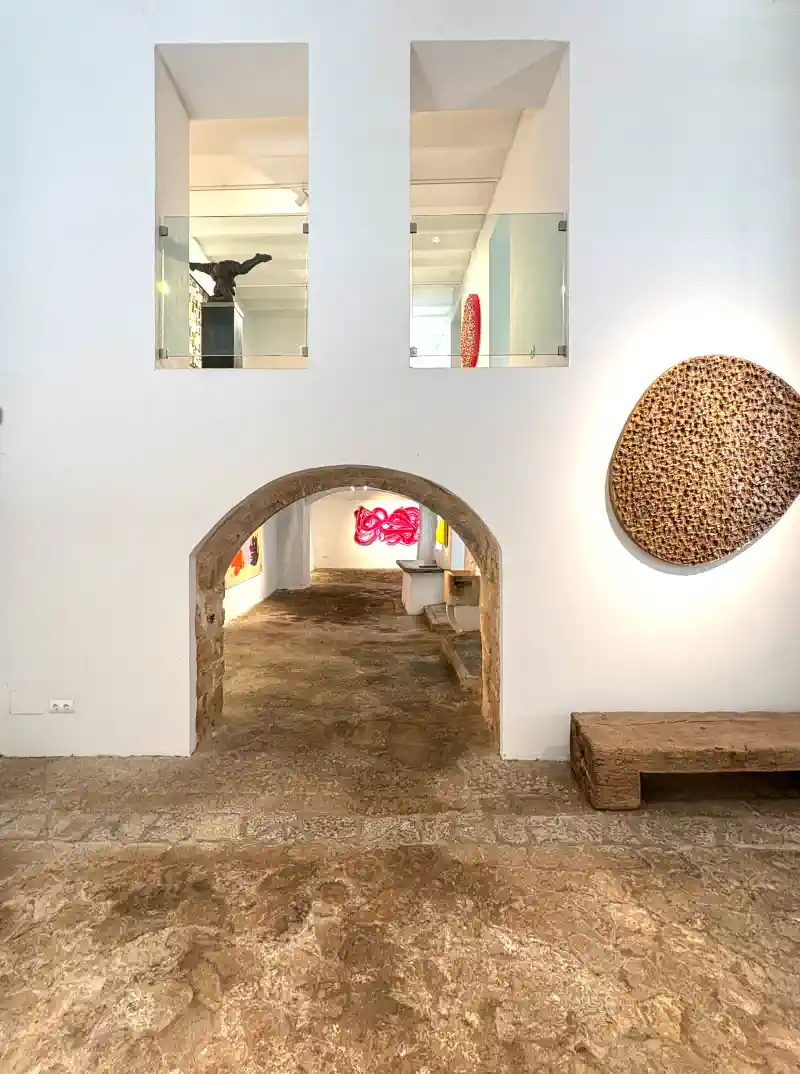
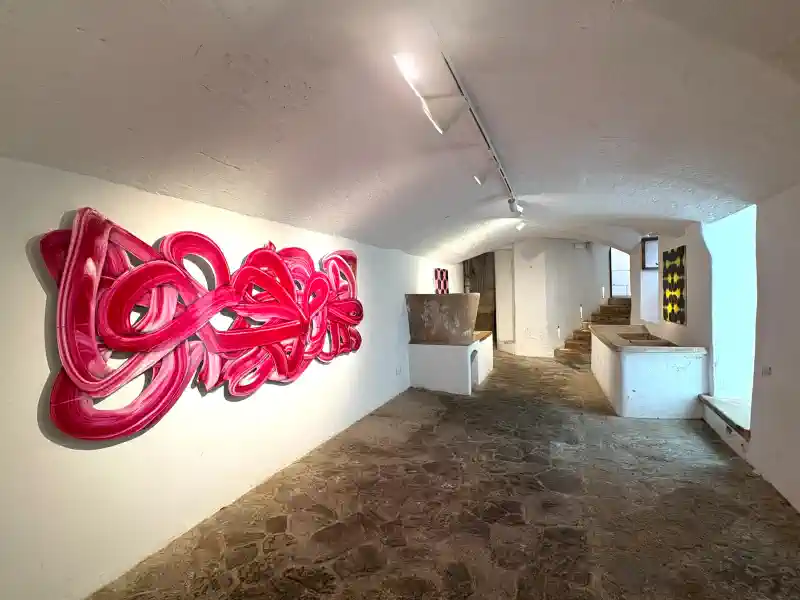
How have you adapted the spaces to showcase the art without compromising their historic character?
The historic rooms of the Art Palace and the Art Labs have been largely preserved in their original state. In one area, an additional gallery level was added, and modern elements have been subtly integrated to enhance functionality without altering the building’s character.
In other exhibition spaces such as the ART HALL and the ART WINDOW, we deliberately embrace the neutral character of the white cube. Alongside solo exhibitions, we also present group shows, allowing the artworks to resonate both within the historic context of the palace and the clean, minimalist environment of the white cube. In the white cube, the artwork stands on its own, while in the historic setting a stimulating dialogue emerges between the work and the architecture.
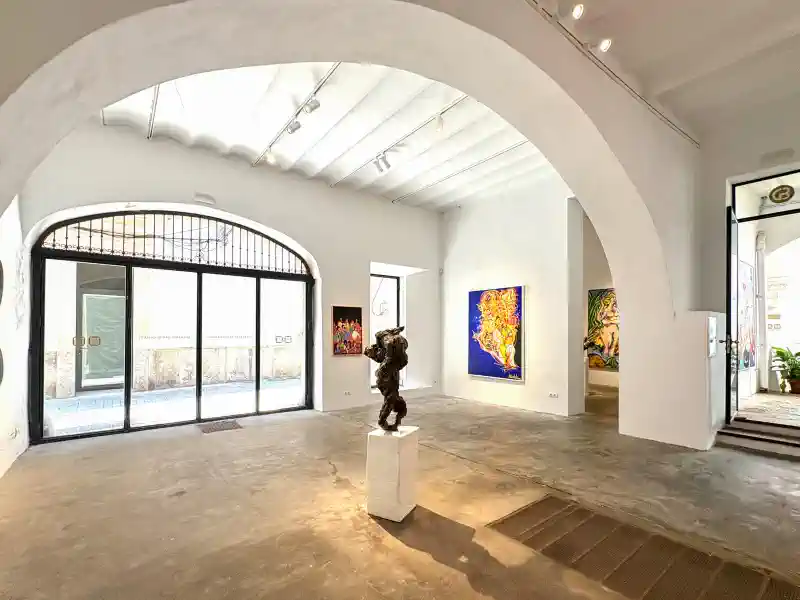
What kind of art do you exhibit in your gallery, and how would you describe the range of artists you represent?
Our galleries showcase contemporary art - spanning painting, sculpture, installation, and conceptual art. The common denominator among our artists is their distinctive individual expression and their ability to address and convey current societal, philosophical, or aesthetic questions through their work. Our artists are internationally and cosmopolitan influenced and often work across disciplines. They combine craftsmanship with intellectual depth.
Some artists employ a powerful, color-intensive gesture, creating expressive dynamism and an energetic visual language. Others incorporate poetic and introspective elements; merging painting and concept to invite multilayered engagement. Still others are known for figurative works situated between Pop Art and classical painting traditions, reflecting themes such as luxury, consumer culture, and the spirit of the times. And yet others impress with minimalist, clear forms and a sensitive handling of materiality and space.
Regardless of the architectural context - whether in historic rooms or within the white cube - the works consciously create moments of reflection and open new perspectives on contemporary art for the viewer.
You have several additional exhibition spaces in the street, most of which are part of historic buildings. Do the artists choose their exhibition spaces, or do you decide which type of art suits each space best?
The selection of exhibition spaces is always very deliberate on our part. Of course, we discuss the spaces and their atmosphere with the artists, but ultimately it is our responsibility as a gallery to determine which kind of art is best showcased in which space. We know the particularities of our venues intimately - whether the historic city palaces or the white cube spaces like the ART HALL or ART WINDOW, where the works can stand independently. Our goal is to select spaces that optimally support and amplify the meaning and impact of the art.
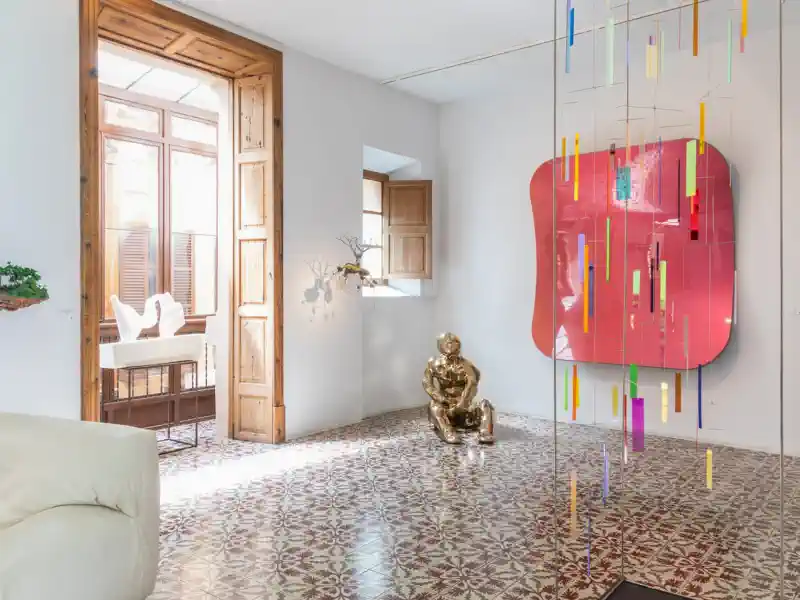
How do the artists themselves respond to this exhibition venue - is the historic setting more of a challenge or an inspiration for them?
For many artists, the historic setting initially presents a special challenge - they are aware that the space itself holds a strong presence and actively participates in the experience. Yet precisely in this lies the great inspiration: artists quickly sense that a dialogue between artwork and architecture emerges, opening up new perspectives. Many deliberately use the atmosphere, the patina, the light, and the history of the rooms to present their work in a different context. It is always fascinating to observe how the works transform within the historic environment and gain an additional depth.
Your gallery attracts an international audience. Who are the people who find their way to your spaces - and does the historic architecture of the buildings play a role alongside the exhibitions?
Our gallery indeed attracts a very international audience - collectors, art enthusiasts, fellow artists, as well as many curious visitors eager to discover Palma as a cultural city. Many come to us through recommendations or media exposure. And yes, the historic buildings themselves play an important role. Most visitors are immediately captivated by the architecture, the ornaments, the old doors and staircases. Often, this initial fascination is the very impulse that draws them into the gallery - where they then experience the compelling dialogue between art and space. For us, it is not just about the exhibition but always also about the building as an integral part of the overall experience.
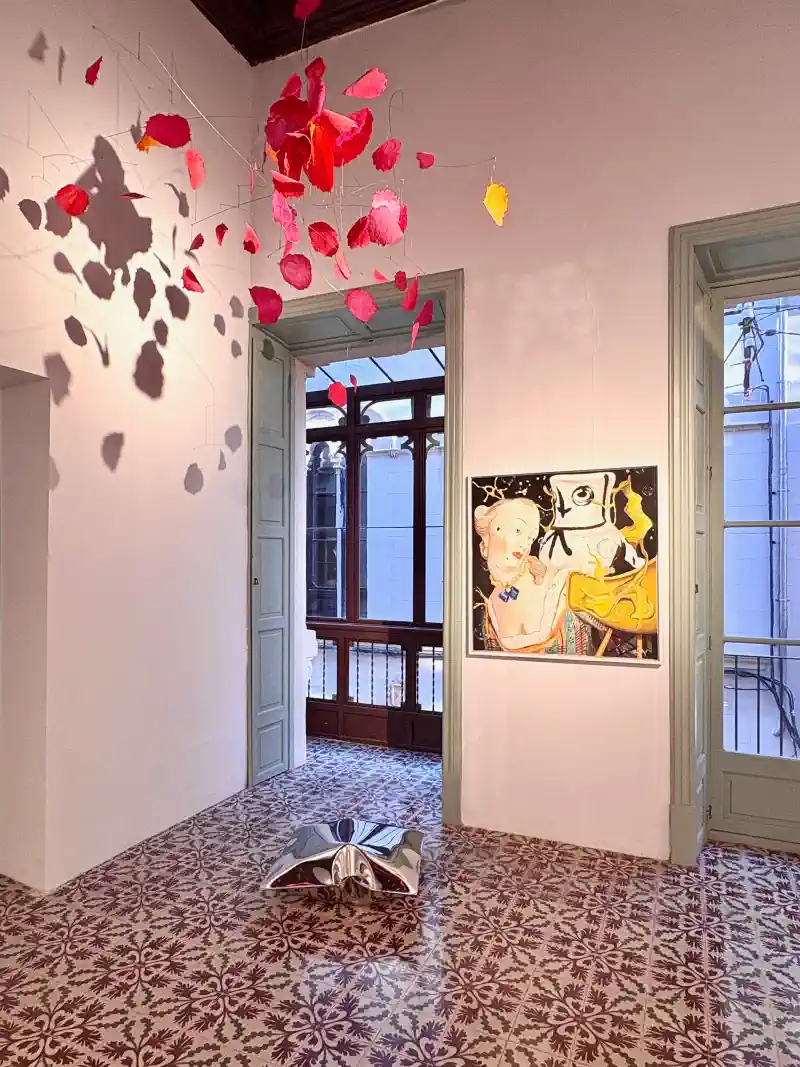
We thank Mr. Gerhardt Braun for this inspiring conversation about art and space and warmly recommend a visit to the Art Palace at Carrer de Sant Feliu 10 in Palma’s historic old town. The gallery is open Monday through Saturday from 10:00 AM to 8:00 PM. For information on current exhibitions, artists and events, visit the GB Gallery Palma.
The interview was conducted by real estate agent Inga Rück from Berlin in July 2025.







 Charlottenburg-Wilmersdorf, Westend
Charlottenburg-Wilmersdorf, Westend

